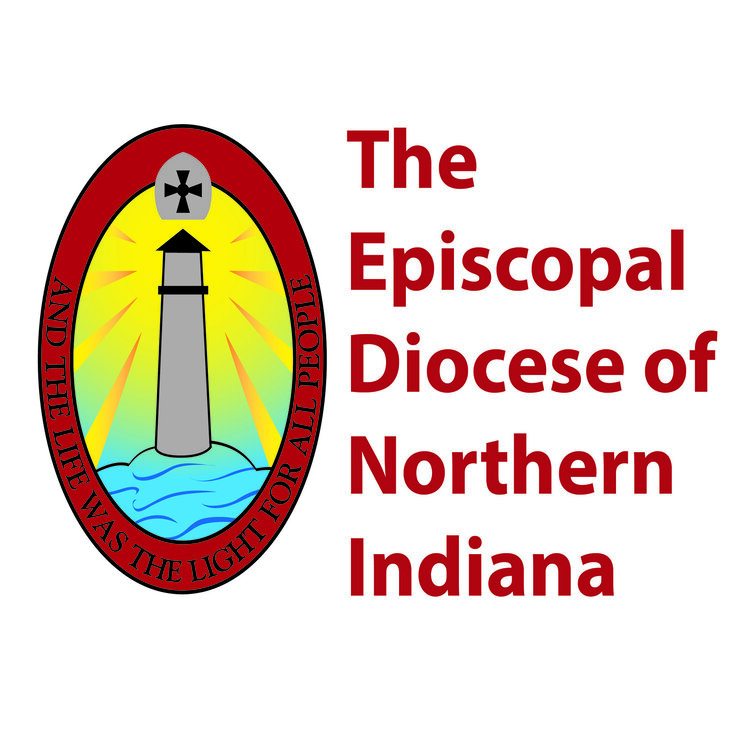The fourth and final group of Episcopal Congregations participating in the Church Buildings for Collaborative Partnerships project (CBCP) is underway. Cohort 4 participating congregations are located as far south as New Harmony and as far north as Angola, and communities of all sizes in between.
CBCP helps Episcopal congregations in the state of Indiana increase vitality and service to their mission and ministry by making the most of their buildings and other assets. The project is a collaboration of the Episcopal Diocese of Indianapolis, the Episcopal Diocese of Northern Indiana and two not-for-profit agencies: Partners for Sacred Places (PSP) and Indiana Landmarks. It was funded through a Thriving Congregations Initiative grant from Lilly Endowment.
Each of the four CBCP cohorts include lay and clergy teams from congregations in both dioceses. Teams range in size from two to eight people. CBCP Teams provide leadership “on the ground” in their congregations. They participate in trainings (both online via Zoom and in person), carryout assignments and keep others at their church informed about CBCP activities. A full listing of participants in each Cohort is found in the table below.
Highlights of the CBCP experience include:
Public Value Tool – Developed by PSP, the online Public Value Tool walks users through a seven step process to determine the dollar value of the contribution their congregation and its building(s) make to the community. This is a new dimension of impact many church leaders have never considered, let alone possess an easy way to determine.
Site Visits - The Site Visits provide fresh perspective and insights from Partners for Sacred Places and Indiana Landmarks, and experiential learning that “connects all the dots” from training session lessons. CBCP teams have expressed joyful delight as they found, sometimes to their surprise, that community stakeholders were impressed with their story and quite willing to discuss collaborative possibilities. (See reflection section below for examples).
Buildings, Mission, and Community Partnership Report (sometimes referred to as the “Parish Profile”), which compiles data and insights about each congregation as gained through CBCP activities, an overview of indoor and outdoor spaces and current space-sharing strategies. It also includes recommendations for moving forward to implement lessons and partnership opportunities gained through CBCP training and the Site Visit.
Rose Anne Grasty, a member of the team of St. Timothy’s in Indianapolis, sums up one important CBCP insight this way:
“Most of us are learning that the space that we have is not ‘Sunday space’ – It is space for the use of God’s children. That may mean something entirely different than what is has meant in the past. Especially us lifetime Episcopalians have to see things very differently and open ourselves up to the world around us. Think about the early churches. They had other uses besides worship. Our churches are not just sacred facilities to be used on Sunday morning or traditional uses like AA. We can provide our space for new
uses. We just need to open up!”For more information, contact Linda Buskirk, CBCP Project Director at Linda@buskirksolutions.com.
Church Buildings for Collaborative Partnerships Project Participation by Cohort
69 faith communities
332 team members
Cohort 11. Good Shepherd, West Lafayette
2. Holy Family, Fishers
3. St. Alban’s, Indianapolis
4. St. Francis In-the-Fields, Zionsville
5. St. John’s, Mount Vernon
6. St. Matthew’s, Indianapolis
7. St. Stephen’s, Terre Haute
8. St. Thomas, Franklin
9. Christ the King, Huntington
10. St. Andrew, Kokomo
11. St. John the Evangelist, Elkhart
12. St. Paul’s, LaPorteCohort 2
1. Trinity, Anderson
2. Trinity, Bloomington
3. Canterbury House, Bloomington (I.U. campus)
4. St. Philip’s, Indianapolis
5. St. Timothy’s, Indianapolis
6. St. Peter’s, Lebanon
7. St. James, New Castle
8. St. Michael’s, Noblesville
9. St. Paul’s, Richmond
10. St. James, Vincennes
11. St. Alban’s, Fort Wayne
12. Trinity, Fort Wayne
13. Gethsemane, Marion
14. Trinity, Michigan City
15. St. James Goshen
16. All Saints, SyracuseCohort 3
1. St. John’s, Bedford
2. St. Paul’s, Evansville
3. St. Andrew’s, Greencastle
4. Church of the Nativity, Indianapolis
5. St. Paul’s, Indianapolis
6. Christ Church, Madison
7. Grace, Muncie
8. St. Mark’s, Plainfield
9. St. Augustine’s, Gary;
10. St. Barnabas-in-the-Dunes, Gary;
11. St. Christopher's, Crown Point;
12. St. Paul, Munster;
13. St. Stephen's Hobart;
14. St. Timothy's, Griffith.
15. St. John of the Cross, Bristol
16. St. Francis, Chesterton
17. Grace, Fort Wayne
18. Cathedral St. James, South Bend
19. St. Anne’s, WarsawCohort 4 (Recruited in 2022; Orientation Held Nov. 30, 2022; training begins January 2023)
1. St. David’s, Bean Blossom
2. St. Christopher’s, Carmel
3. St. Paul’s, Columbus
4. St. John’s Crawfordsville
5. St. Augustine, Danville
6. All Saints, Indianapolis
7. Christ Church Cathedral, Indianapolis
8. Trinity, Indianapolis
9. St. Paul’s, Jeffersonville
10. St. John’s, Lafayette
11. Trinity, Lawrenceburg
12. St. Mary’s, Martinsville
13. St. Paul’s, New Albany
14. St. Stephen’s, New Harmony
15. St. Luke’s, Shelbyville
16. Holy Family, Angola
17. St. David’s, Elkhart
18. Trinity, Logansport
19. St. Paul’s, Mishawaka
20. St. Thomas/Santo Tomás, Plymouth
21. St. Michael & All Angels, South Bend
22. St. Andrew’s, Valparaiso
